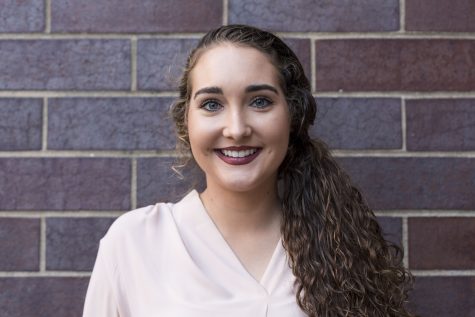All You Need to Know About the IEC Sit-In
Incarceration to Education Coalition organizers and supporters secured both a recorded phone meeting with Common Application CEO Paul Mott and the promise of a meeting with NYU President Hamilton Saturday night after occupying the Kimmel Center for Student Life for more than 30 hours.
The IEC held the sit-in to demand the university take immediate action to remove questions of disciplinary action and criminal history from its admissions applications.
The IEC has made significant strides with banning these questions — known as the box — in the past, including removing the box altogether from the Silver School of Social Work’s Master’s program application. However, the box is still part of the Common Application, which NYU uses as its primary application for undergraduates.
Friday’s occupation was held in response to what the IEC says is the university’s passive approach to removing the box. However, NYU’s administration has responded to the IEC’s demands in the past, including initiating a discussion between the Common App and the university.
WSN reported that on Feb. 1, NYU sent a letter to the Common Application calling for more research on the box’s possible effects on applicants and campus safety. However, the published letter was highly contested by the IEC, as the group argued the administration was only using the letter as a stalling tactic.
At 12 a.m. Saturday morning, Senior Vice President of Student Affairs Marc Wais addressed the protestors as the building closed to the public.
“We want to be as respectful and as flexible as possible when dealing with this occupation,” Wais said. “But like I said before, this building closes at midnight, and we will be shutting it down at midnight. NYU students that choose to stay in the building could potentially face disciplinary action for trespassing.”
Despite this threat, 22 students stayed overnight inside the building. The following morning, the IEC pledged to remain in the staircase area of Kimmel until NYU took concrete action to abolish the box, which they say targets individuals from marginalized communities.
Among the new demands issued by the IEC throughout the occupation were that the administration facilitate a meeting between IEC, NYU and the Common App. The IEC also requested that the meeting be open to the public, but this was denied by NYU administration.
Saturday afternoon, IEC organizers told WSN that Wais would guarantee a meeting with NYU administrators and the Common App on March 29, if students vacate Kimmel by 4 p.m. In addition, the organizers said Wais again threatened to pursue disciplinary action on the remaining occupants if they did not comply with this new deadline.
Gallatin junior and IEC organizer Sumathy Kumar said IEC organizers want their overnight stay — among other things — to be worth their while.
“We need an explanation for why they refused our demands,” Kumar said. “We haven’t gotten one of those. We’ve been here 24 hours now and I think it’s time for Andrew Hamilton to come down to talk to us.
However, Hamilton did not make an appearance during the occupation, and despite pushback from administration, the IEC held a teach-in, starting shortly after 3:40 p.m.
Two hours passed before Wais presented the IEC with the university’s written response to their demands; however ,the parties were unable to come to an agreement. Several more hours passed, and Wais conceded on three important terms with the crowd:
IEC will have a private, recorded meeting with a Common App representative on Tuesday at 1:30 p.m.
IEC will meet with President Hamilton within the next two weeks.
IEC will not trespass before Tuesday’s Common App Meeting.
As the protestors cheered, Wais returned shortly after his announcement to say the meeting with Common App could not be recorded. IEC members subsequently appealed to those who recorded the conversation between Wais and IEC organizers to find video proof of his statement.
This led the IEC members to make plans to stay overnight in Kimmel for the second day in a row. However, shortly after 10:30 p.m., a small group of IEC organizers met with Wais and received a final offer of a recorded meeting with the Common Application. In addition, the offer included Wais advocating for a meeting between the IEC and President Hamilton before the semester ends.
After some deliberation, IEC members accepted the university’s terms to conclude their sit-in on the condition that Wais could ensure a meeting with President Hamilton, instead of “advocating” for one. Wais agreed on this caveat, and the IEC will facilitate a recorded meeting with the Common Application on Tuesday. This meeting will include a presentation from the IEC on their case for removing the box from NYU’s Common Application.
After the occupation disbanded, NYU spokesperson Matt Nagel said NYU takes the IEC’s views seriously, but they believe a different approach should be taken to address banning the box.
“The IEC wants NYU to eliminate the box now, before any objective research has been conducted,” Nagel said. “As [NYU] has told the IEC repeatedly, we think that’s the wrong order if we’re going to make the right decision and if we hope to have needed support from other institutions.”
A version of this article appeared in the Monday, March 28 print edition. Email Lexi Faunce at [email protected].

Lexi Faunce is a junior studying journalism and politics, and she will be joining WSN this semester as the Investigative News Editor. She hails from the...






















































































































































